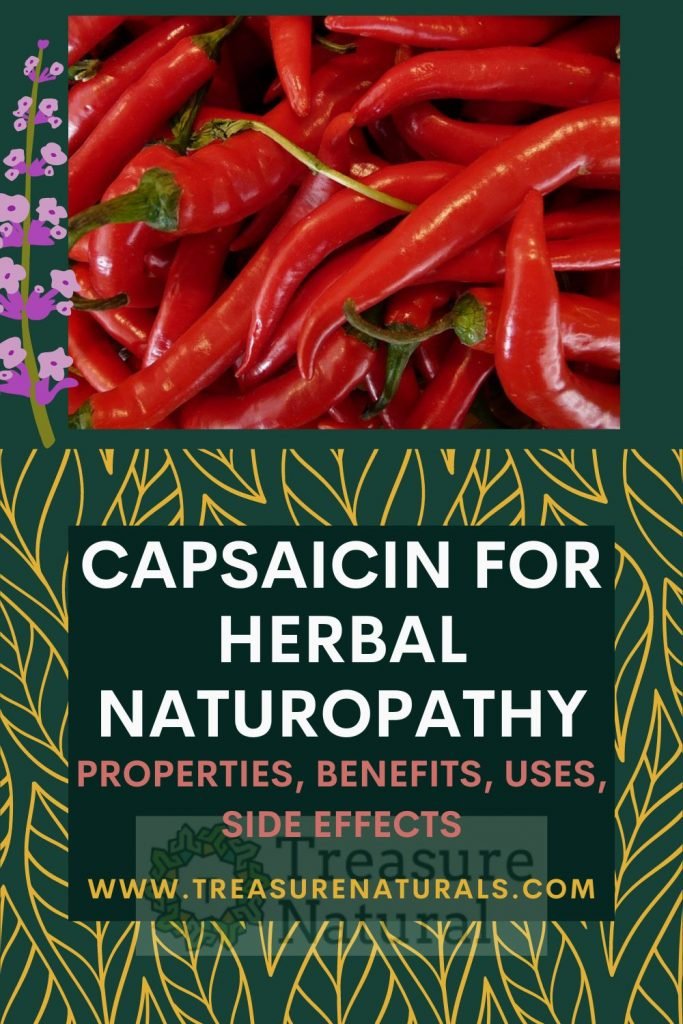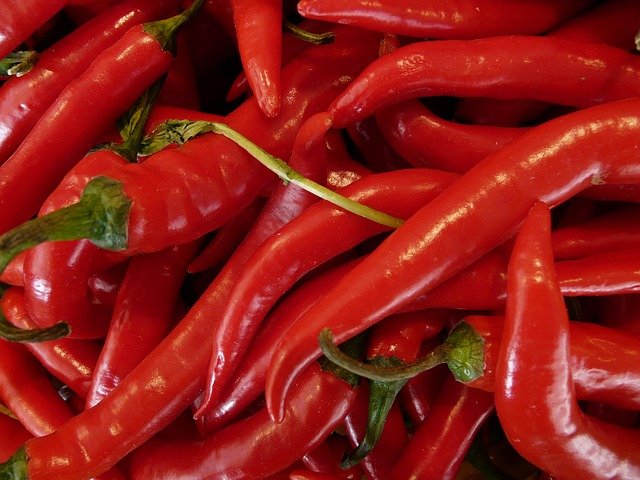
Capsaicin is an alkaloid contained in chilli pepper and in plants of the genus Cspsicum, with an analgesic and soothing action, useful for treating arthritis, rheumatism and neuralgia. Let’s find out better.
What is Capsaicin
Capsaicin is an alkaloid present in plants of the genus Capsicum, the well-known chili pepper. Alkaloids are molecules with an amino group capable of giving a basic reaction. They are toxic substances and used by plants for defense purposes.
Examples of important alkaloids in the plant kingdom are nicotine, caffeine, strychnine, stramonium.
In phytotherapy, alkaloids in general, and capsaicin in detail, play important roles. Chilli pepper extract is used as an anti-inflammatory in joint disorders.
Where is capsaicin found
Capsaicin is extracted from Capsicuum annuum L., the chili pepper. There are several controversies in the botanical classification of chillies distinguishable by the spicy power of their fruits. Currently there are five species of chillies, with their varieties.
The annual capsicum is a herb up to 1m tall, while the other species are generally multi-year woody shrubs. All are native to tropical America and are now widely cultivated. The fruits are spicy or in some sweet varieties (eg paprika).
Chilli pepper contains up to 1.5% of spicy components, consisting of capsaicin, dihydrocapsaicin, nordihydrocapsaicin, homocapsaicin, in addition to other molecules with a minor component. In addition, it is rich in carotenoids, vitamins A and C.
The scale of measurement of the spiciness of chili peppers and the scoville scale. The higher the spiciness of the chili, the higher the scoville unit. The hottest known peppers exceed 2,000,000 scoville units. The hottest chilli produced in Italy reaches a maximum of 500 scoville units!
Properties of capsaicin
Capsaicin has a powerful local stimulating action, as well as strongly irritating to the eyes; softens the skin, producing an intense burning sensation.
The intense action of burning, pain and inflammation in the topical application of capsaicin tends to decrease with the continuation of the administration for desensitization.
The analgesic and soothing action induced by capsaicin can be explained by the substance’s interference with the skin’s sensory nerves. Furthermore, other studies confirm the ability of the alkaloid to cause a depletion of substance P (molecule involved in the inflammatory response) by the sensory neurons involved in the transmission of the stimulus.
Capsaicin is used in various preparations for anti-irritating external applications to treat arthritis, rheumatism, neuralgia, back pain and chilblains. In the case of painful spasms in the muscles of the shoulder, arm and spine.
Recent studies consider it as an interesting antioxidant for the prevention of cancerous lesions.
Contraindications

When taken by mouth, chili peppers can cause gastrointestinal side effects, such as abdominal pain and nausea. Topically, it can cause burning and irritation and can be dangerous if it comes into contact with the eyes.
Chilli can interact with many other drugs, such as theophylline, ACE inhibitors, sedatives, antidepressants, and acetaminophen.
When using capsaicin creams, occlusive bandages must be avoided; as well as hot baths and showers before and after application because they increase the burning sensation.






